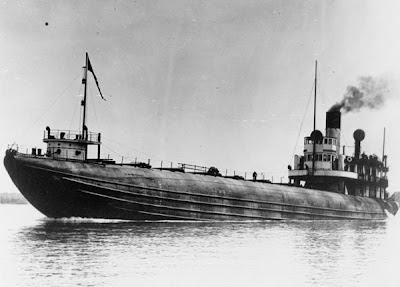History and Mystery Underwater
"The annals of this voracious beach! Who could write them, unless it were a shipwrecked sailor? How many who have seen it only in the midst of danger and distress, the last strip of earth which their mortal eyes beheld."
-Henry David Thoreau from Cape Cod, 1865
As much as I look forward to future sailing adventures and use planning them as a means of mentally surviving the long Great Lakes winter, I also use the offseason to slow down and savor the rich history of my home waters. Part of that rich history is now protected by the West Michigan Underwater Preserve. We often look astern to see where we've sailed, look forward to see what's ahead of the bow, and look aloft to check the sky, sails, or wind indicator. But how often do we look below the water's surface? Do you ever think about the history that you're literally sailing right over the top of? I do, and I have to admit, sometimes it's spooky.
The West Michigan Underwater Preserve (WMUP) began as a community movement to protect the maritime history of the West Michigan area and Lake Michigan. The WMUP officially became Michigan's 13th underwater preserve last week when the Department of Enviornmental Quality filed paperwork, thanks to a motivated group of citizens. The preserve covers about 345 square miles featuring at least 13 identified shipwrecks and three other underwater structures. As part of the underwater preserves program, the wreck sites within the preserve will now be marked with buoys and find their way onto navigation charts. The preserve includes underwater areas from a point between Grand Haven and Holland up to the northern boundary at Ludington State park and all waters and bottomlands four miles offshore.
If you have an interest in shipwrecks and Great Lakes history, you'll find plenty to occupy your mind in the new preserve. The following are just a couple of shipwrecks of particular interest to me.
Henry Cort: The Henry Cort was a 320' whaleback steamer that became stranded along the Muskegon breakwall (our homeport) on November 30, 1934. She broke up and was never recovered. The crew all survived but a member of the USCG rescue crew was lost in the storm that sent her to the bottom. Today she still sits near the outside arm of the north breakwall in about 20'-30' of water. As an interesting sidenote, a "whaleback" was a type of cargo steamship with hull sides that curved up and inward, making the deck look like a giant whale's back.
 |
| The Henry Cort and her distinctive whaleback design |
 |
| Henry Cort aground against the Muskegon breakwall |
 |
| A rare photo of Helen |
"The most disastrous day in the histroy of Lake Michigan shipping was Armistice (now Veterans') Day, November 11, 1940. With seventy-five-mile-per-hour winds and twenty-foot waves, a raging storm destoryed three ships and claimed the lives of fifty-nine seamen. Two freighters sank with all hands lost, and a third, the Novadoc, ran aground with the loss of two crew members. Bodies washed ashore throughout the day. As night fell, a heavy snow storm arrived. Rescue efforts by the Coast Guard and local citizens continued for three days after the storm. Three Pentwater fishermen were later recognized by the local community and the Canadian government for their bravery in rescuing seventeen sailors from the Novadoc."
 |
| The William B. Davock proudly steaming ahead |
For more details about the historical treasures in the West Michigan Underwater Preserve, check out the video below:




Comments
Post a Comment